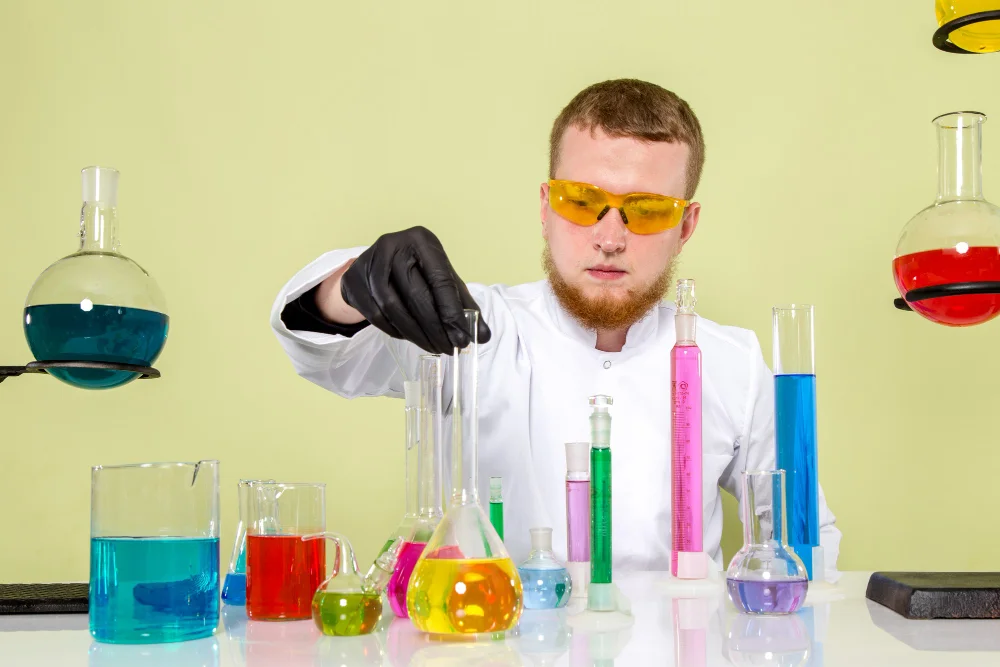Balancing chemical equations is one of the most important skills in chemistry. It ensures that the reaction follows the law of conservation of mass, meaning atoms are neither created nor destroyed. Instead, they are rearranged into new compounds. For many students and professionals, balancing equations like hcooch ch2 h2o can seem complicated at first, but once the method is understood, it becomes straightforward.
This article breaks down the process step by step, explains why balancing is important, and provides simple strategies you can use to balance equations quickly and accurately.
Why Balancing Equations Matters
Before diving into the details, it’s important to understand why chemists balance equations:
- Accuracy in Reactions: Without balancing, we cannot predict the right quantities of reactants or products.
- Real-World Applications: Industries like pharmaceuticals, agriculture, and energy rely on balanced equations to calculate yields and minimize waste.
- Foundation for Learning: Balancing is essential for mastering advanced concepts like stoichiometry, reaction rates, and equilibrium.
When applied to hcooch ch2 h2o, balancing helps us see how each atom rearranges to form new molecules.
Understanding the Components of hcooch ch2 h2o
At first glance, hcooch ch2 h2o might look confusing. It represents a hydrolysis-type reaction involving water. Breaking it down:
- HCOOCH: Indicates part of an ester-like compound.
- CH2: Represents a carbon and hydrogen unit.
- H2O: Water, which plays the key role in hydrolysis.
Balancing this equation means making sure the number of atoms on the reactant side (before the arrow) equals the number of atoms on the product side (after the arrow).
Step-by-Step Guide to Balancing Chemical Equations
1. Write Down the Unbalanced Equation
Start by writing the given chemical reaction in its raw form:
HCOOCH + CH2 + H2O → Products
At this stage, don’t worry about coefficients. Just list it clearly.
2. Identify the Elements Involved
Look at each compound and identify the unique elements:
- Hydrogen (H)
- Carbon (C)
- Oxygen (O)
3. Count the Atoms on Each Side
For the unbalanced version:
- On the left side: we have hydrogen (H), carbon (C), and oxygen (O).
- On the right side: the products need to be analyzed to know how these atoms rearrange.
This step is essential to see what’s missing or unbalanced.
4. Balance One Element at a Time
When balancing, always:
- Start with complex molecules.
- Leave hydrogen and oxygen for last, since they often appear in multiple compounds.
For hcooch ch2 h2o, the focus would be first on carbon, then hydrogen, then oxygen.
5. Use Coefficients, Not Subscripts
Remember: you can only adjust the coefficients (the numbers in front of molecules), not the subscripts inside formulas. Changing subscripts alters the compound itself, which changes the chemistry.
For example:
- Correct: 2H2O
- Incorrect: H2O2 (completely different compound).
6. Check Your Work
Once coefficients are added, recount the atoms on both sides. If they match, your equation is balanced. If not, keep adjusting.
Common Mistakes Students Make
Balancing chemical equations can feel tricky because of common errors. Here are pitfalls to avoid:
- Changing subscripts instead of coefficients: This creates new substances that don’t represent the reaction.
- Ignoring polyatomic ions: Sometimes it’s easier to balance ions as a unit instead of splitting them apart.
- Forgetting the law of conservation: Every atom on the left must appear on the right.
Practical Tips for Balancing hcooch ch2 h2o
- Use a Table Format: Write a table comparing atom counts on both sides to keep track.
- Start with Carbon: Hydrocarbon-related reactions are easier when carbon is balanced first.
- Double-Check Oxygen and Hydrogen: Since they appear in water and organic molecules, they often require fine adjustments.
- Work Systematically: Avoid guessing. Instead, adjust one coefficient at a time.
Why hcooch ch2 h2o Is a Good Example
The reaction involving hcooch ch2 h2o is valuable for learners because:
- It demonstrates hydrolysis, a common type of reaction.
- It involves multiple elements interacting, making it slightly challenging but not overwhelming.
- It helps connect abstract chemical principles with real-world reactions in food, medicine, and environmental systems.
Real-Life Applications of Balanced Equations
Balancing isn’t just an academic exercise. It has wide-ranging uses in everyday life and industry.
1. Pharmaceutical Industry
Balanced equations ensure drugs are synthesized with the right ratios of reactants, preventing waste and maximizing safety.
2. Food Chemistry
Reactions like hydrolysis (as in hcooch ch2 h2o) are critical in food preservation and flavor development.
3. Energy and Fuels
Fuel combustion reactions must be balanced to calculate energy efficiency and reduce harmful emissions.
4. Environmental Science
Balanced equations allow scientists to predict how pollutants will break down in water or air.
Modern Tools to Help Balance Equations
Today, balancing equations is easier thanks to digital tools and AI-assisted platforms. These tools:
- Provide instant step-by-step balancing.
- Help students practice complex reactions.
- Save time in professional labs by reducing manual calculations.
However, while tools are helpful, understanding the process remains essential for mastering chemistry.
Advanced Strategies for Students
If you want to move beyond simple balancing, here are advanced approaches:
- Algebraic Method: Assign variables to coefficients and solve like algebraic equations.
- Oxidation-Reduction Method: For redox reactions, balance electrons first before atoms.
- Inspection Method: A quick trial-and-error approach for straightforward equations like hcooch ch2 h2o.
Conclusion
Balancing chemical equations like hcooch ch2 h2o is about more than just numbers—it’s about understanding how atoms interact and transform. By following a step-by-step approach, focusing on one element at a time, and applying coefficients correctly, anyone can master this skill.
Whether you are a student preparing for exams, a teacher simplifying lessons, or a professional working in industry, the ability to balance equations is a foundation for deeper knowledge in chemistry.
The next time you see an equation like hcooch ch2 h2o, remember: it’s not a puzzle to fear, but a process to follow. With practice, you’ll be able to balance any equation confidently and apply that knowledge in both academic and real-world settings.

